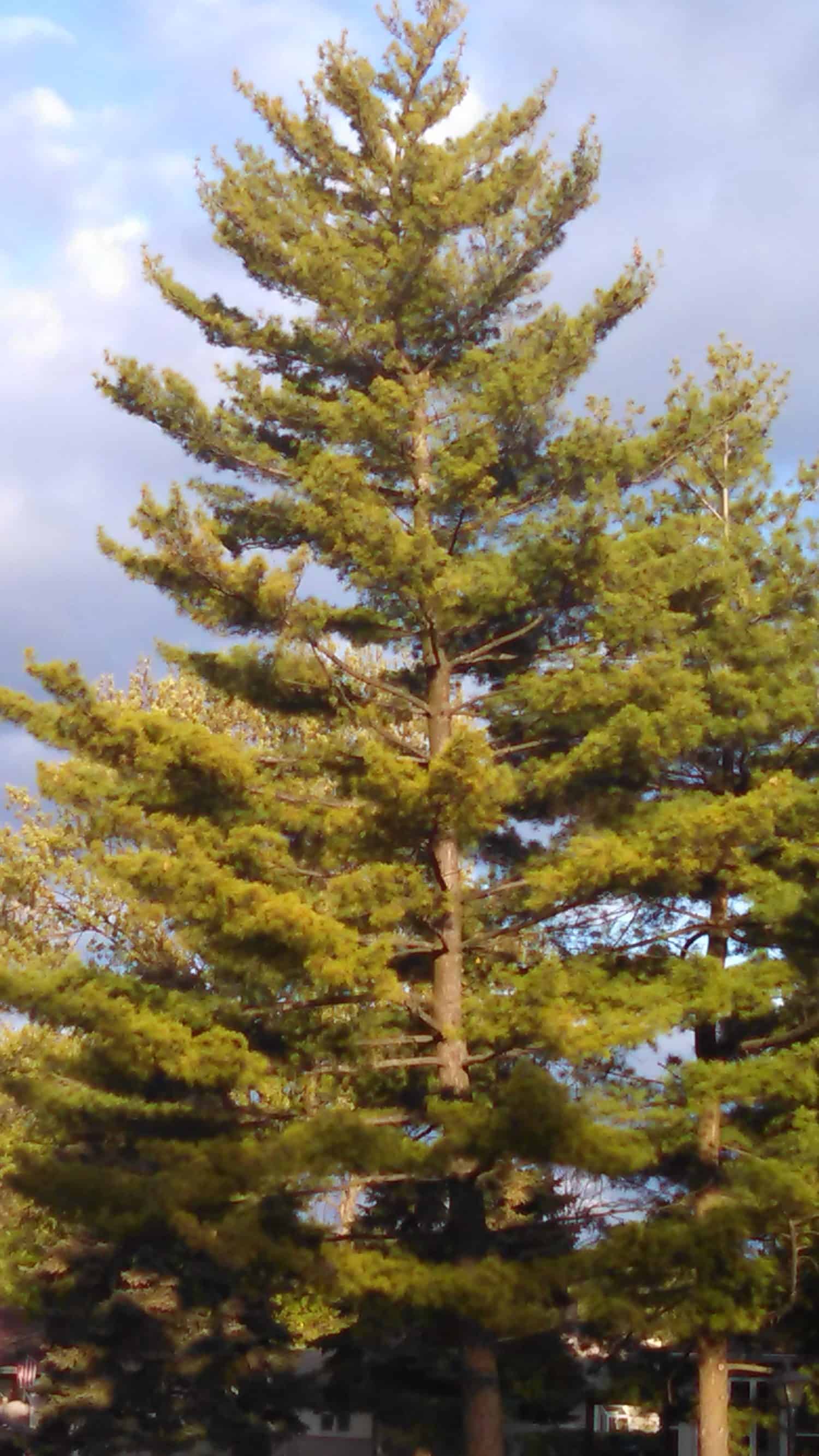The clotted, brooding clouds finally lifted, like a curtain, and the sun took the stage while the masses applauded its return to the spotlight. She’s a crowd pleaser even if she only makes an appearance (approximately) 189 days per year. Wow. That’s a shocking number the more I think about it – a little over half a year.
As sad as that number may seem, it is also the reason why certain plants do well here. After all, Illinois is part of the mighty Midwest bread basket, leading the way in corn and soybeans. In fact, Illinois is the second largest exporter of agricultural commodities nationwide. This is due in large part to the climate and fertile soil, so there’s a trade-off of sorts.
Further still, Illinois is home to some amazing native plants and trees, and although non-natives can and have adapted here, there’s a majestic tree that we can call our own. The mighty White Pine.
The White Pine, also known as the Eastern White Pine, Northern White Pine, and Weymouth Pine, is the tallest of the native conifers, reaching heights as tall as 230′. It has soft, pliable greenish-yellow needles with slender tan cones and dark gray bark. It is soft to the touch, and dances in the wind like no other pine. The branches seem not as dense as other pines, giving it a whispier look, and the contrast of the greenish-yellow needles against the dark, smooth bark is simply stunning. White Pines can live between 150-200 years, although there are specimens thought to be over 450 years old. Virgin stands are protected throughout the country, including our very own White Pines State Park in Mt. Morris, IL.
This noble pine has won a place in my heart, and I feel it’s my duty to honor, love, and sing its praises. After all, the White Pine is our native son.
“Think how stood the white pine tree on the shore of the Chesuncook, its branches soughing with the four winds, and every individual needle trembling in the sunlight…”
-Henry David Thoreau
Best wishes,
Kim Sweeney

